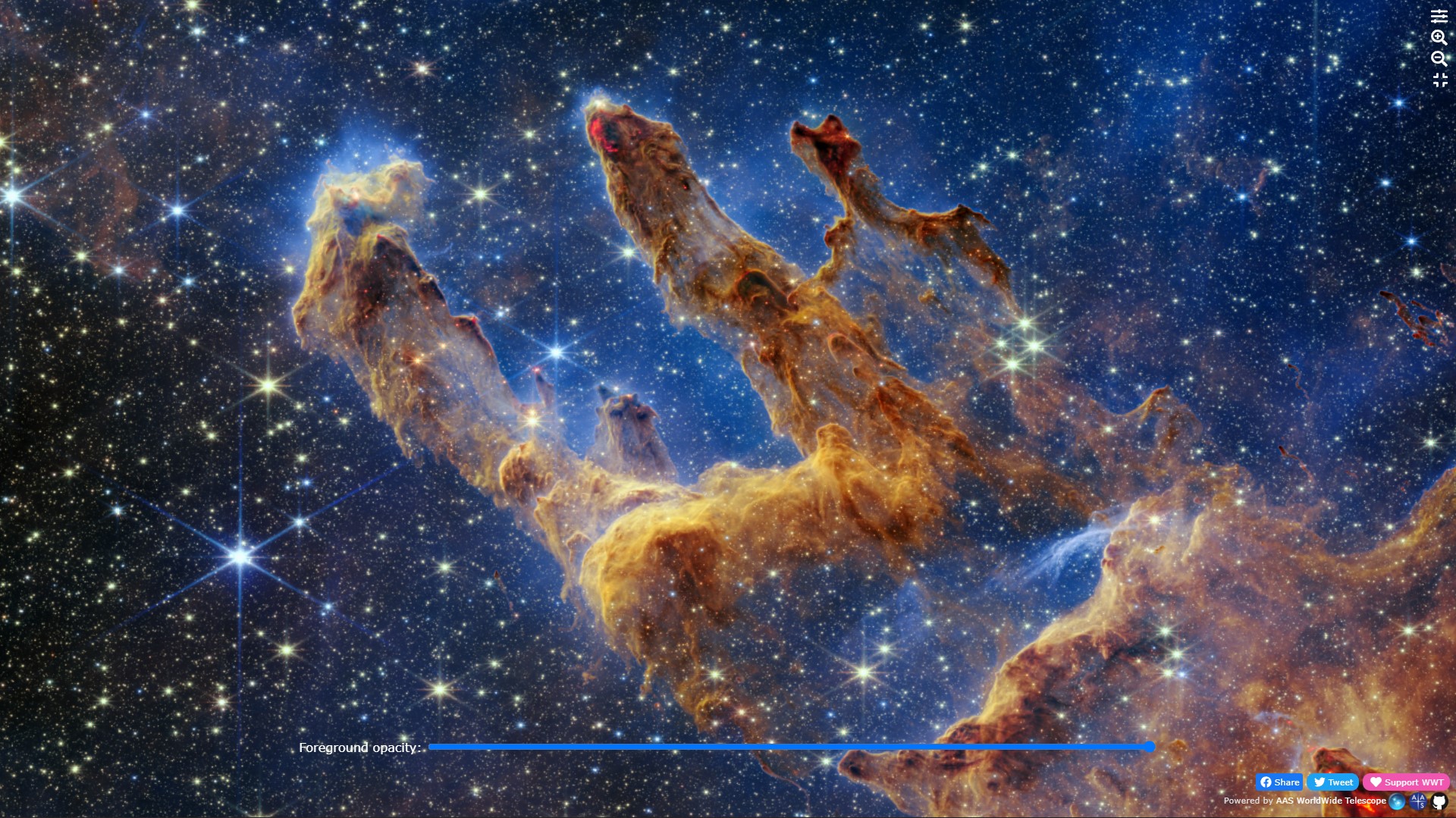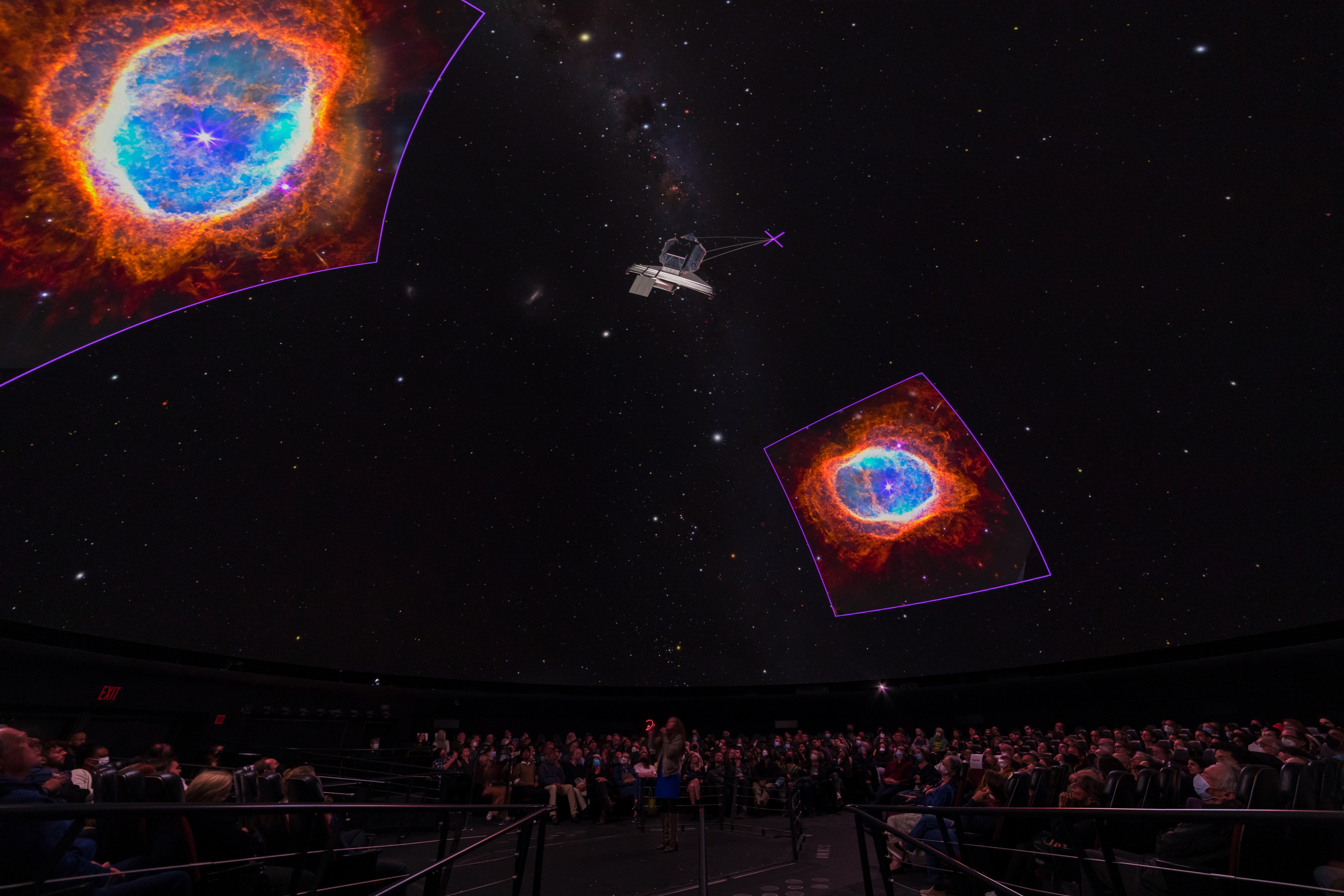WWT Newsletter: November 2022
For those of you who are celebrating, happy Thanksgiving!
JWST keeps the hits coming
After the blockbuster initial release of JWST data, the hits from this new observatory keep on coming, and the WWT team has been importing as many as they can! Since the initial release we’ve added JWST’s view of the Pillars of Creation, and map of hugely distant galaxies from the CEERS collaboration, the Cartwheel Galaxy, and more. The “JWST” category in the WWT web client will always have an up-to-date collection of images as they’re imported into WWT.
WWT and OpenSpace together in the dome
Over the past year, the teams behind WWT and the similar OpenSpace planetarium software have been collaborating to combine the best parts of these two powerful programs. Starting with its version 0.18.0, OpenSpace can now embed WWT inside its view, allowing you to explore high-resolution imagery in the context of OpenSpace’s sophisticated 3D environment. How does that look? Awesome!!! Thanks to researcher and power user Jackie Faherty, here’s a photo of the combination running live inside the Hayden Planetarium at the American Museum of Natural History in New York.
This embedding feature is built on the programmability of the WWT web engine, and is a great demonstration of its power and flexibility.
Better analytics and monitoring thanks to Datadog
Thanks to generous support from the Open Source program at Datadog, the WWT team now has much better — well, any — insight into what’s happening on the WWT web servers. For instance, how many times was the WWT Windows client downloaded in the past 15 days?

Seven thousand, seven hundred and eighty-three times! Until recently, the team had no ability to answer these kinds of questions: WWT’s Azure web services produce such a torrent of logs that it was really difficult to analyze them in any useful way. (The WWT web servers handle more than 2.5 million requests per day!) This was a real problem, because it meant that we couldn’t measure a lot of basic things about how much, and in what ways, WWT is being used.
Although the WWT team is still only using a small fraction of Datadog’s capabilities, a lot of valuable insight has already been gained. For instance, we were able to measure that our JWST explorer apps were used more than half a million times in just a few days! Along with these kinds of analytics, Datadog will help us monitor the WWT servers and make sure they’re running smoothly. To that effect we’ve also created a public dashboard that displays realtime information about what’s going on with the WWT web services. We’re looking forward to getting lots more use out of this tool as we become more sophisticated users of it.
Best,
Peter K. G. Williams, Director of the AAS WorldWide Telescope Project

